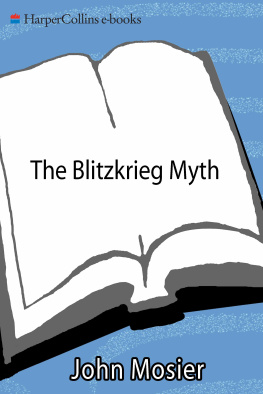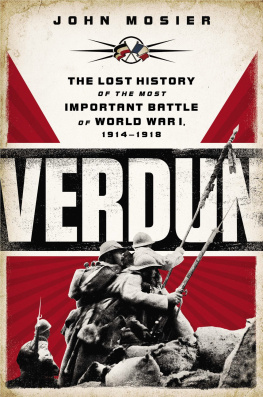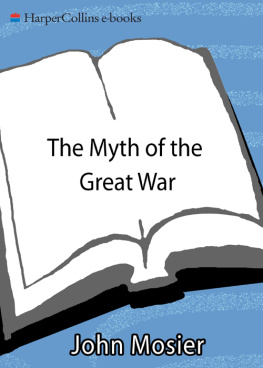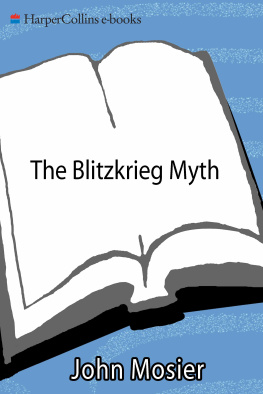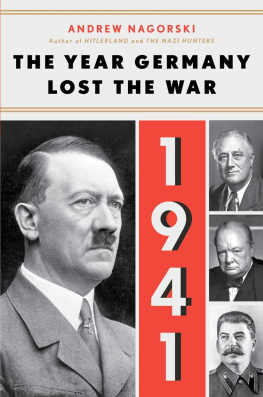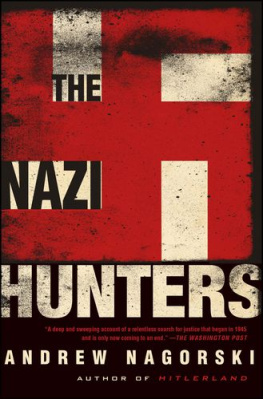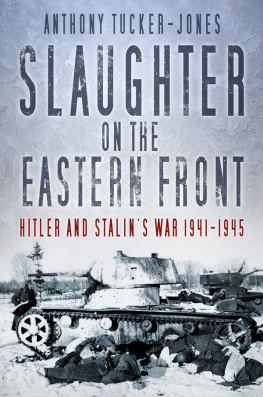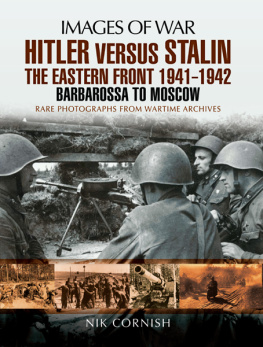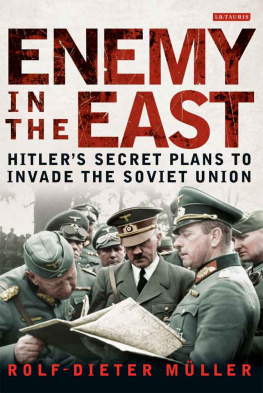ALSO BY JOHN MOSIER
Grant: A Biography
Cross of Iron:
The Rise and Fall of the German War Machine,
19181945
The Blitzkrieg Myth:
How Hitler and the Allies Misread the Strategic
Realities of World War II
The Myth of the Great War:
A New Military History of World War I
DEATHRIDE
HITLER VS. STALIN:
THE EASTERN FRONT,
19411945
JOHN MOSIER
Simon & Schuster
New York London Toronto Sydney
Simon & Schuster
1230 Avenue of the Americas
New York, NY 10020
www.SimonandSchuster.com
Copyright 2010 by John Mosier
All rights reserved, including the right to reproduce this book
or portions thereof in any form whatsoever. For information address
Simon & Schuster Subsidiary Rights Department,
1230 Avenue of the Americas, New York, NY 10020
First Simon & Schuster hardcover edition June 2010
SIMON & SCHUSTER and colophon are registered trademarks
of Simon & Schuster, Inc.
For information about special discounts for bulk purchases,
please contact Simon & Schuster Special Sales at
1-866-506-1949 or business@simonandschuster.com.
The Simon & Schuster Speakers Bureau can bring authors
to your live event. For more information or to book an event,
contact the Simon & Schuster Speakers Bureau at
1-866-248-3049 or visit our website at www.simonspeakers.com.
Designed by Renata Di Biase
Maps by Paul Pugliese
Manufactured in the United States of America
10 9 8 7 6 5 4 3 2 1
Library of Congress Cataloging-in-Publication Data
Mosier, John, date.
Deathride : Hitler vs. Stalin : The Eastern Front, 19411945 / John Mosier.
1st Simon & Schuster hardcover ed.
p. cm.
Includes bibliographical references and index.
1. World War, 19391945CampaignsEastern Front. 2. World War,
19391945Germany. 3. World War, 19391945Soviet Union. 4. Hitler, Adolf, 18891945Military leadership. 5. Stalin, Joseph, 18791953Military leadership.
I. Title. II. Title: Deathride.
D764.M736 2010
940.54217dc22 2010003334
ISBN 978-1-4165-7348-7
ISBN 978-1-4165-7702-7 (ebook)
CONTENTS
Military history is nothing but a tissue of fictions and legends, only a form of literary invention; reality counts for very little in such an affair.
Gaston de Pawlowski, Dans les rides du front
I
INTRODUCTION:
PSEUDO-REALITY AND THE SOVIET UNION
In appearance everything happens in Russia as elsewhere. There is no difference except at the bottom of things.
Marquis de Custine, Letters from Russia (1839)
The war between Joseph Stalin and Adolf Hitler was a savage conflict that raged over an enormous battlefront stretching from the Baltic to the Black Sea. In less than a year and a half, German, Hungarian, and Romanian armies penetrated into the depths of the Russian heartland, reaching historic towns on the Volga and the Don whose last experience of invasion had been centuries before. During the course of the next two and a half years the Red Army retraced that journey in the opposite direction, all the way to the Oder and the Danube, reaching cities whose last experience of Russian soldiery had been almost precisely 140 years earlier, during the Napoleonic Wars.
The enormous geographic scale of the conflict was more than matched by the savagery of the fighting, the casualties sustained by the combatants, and the appalling level of suffering inflicted on the hapless civilians of European Russia and central Europe, whose peoples had not experienced such a series of calamities since the Thirty Years War. The scale of suffering and ruin was so vast as to be unimaginable. Hitlers wicked and ghastly genocidal campaign against European Jewry is almost submerged in this litany of horror and depravity, even though that genocide was one of his two main goals.
Hitlers other aim was the destruction of Bolshevism. Our loathing and consternation regarding the Holocaust tends to make us see these two aims as entirely separate. But before the outbreak of the war on September 1, 1939, Hitlers great public relations coup with his fellow Germans and Austrians was to meld the two. Indeed from his public speeches in the 1930s, one could draw the not unreasonable inference that his antipathy toward the Jewish people was largely restricted to those who had espoused Bolshevism.
A consideration of that complex notion lies outside the aims of this book, as does the Holocaust itself. Suffice it to say that to accomplish those two tasks Hitler was willing to see the Third Reich, that mighty state that he had spent decades creating, destroyed. But today the prosperous, peaceful, and culturally rich Jewish communities of Germany, Austria, central Europe, and the Baltic can hardly be said to exist. But neither does the USSR.
That by the first week of May 1945, Hitler was already dead, his armies destroyed, the cities of what he had intended to be a great imperial realm shattered by American and British bombers, should not lull us into forgetting the astonishing extent to which Hitlers evil empire nearly triumphed.
Stalin, who planned his own holocaust in secret while basking in the worlds admiration as the man who beat Hitler, survived his former ally by barely eight years. By that time, the allegedly victorious citizens of the USSR, no less than those of their client states, were beginning to envy the defeated Germans and Austrians. Hitler had boasted that the empire he created would last a thousand years. The one Stalin had forged collapsed before the millennium. The only enduring legacy of both men is our memory of the mountains of corpses they left behind.
Given the extent to which Hitler persuaded or tempted the citizens of Austria and Germany, two of the worlds most culturally and intellectually advanced nations, into carrying out his nefarious schemes, his infamy, and theirs, naturally preoccupies us. We sometimes forget that Hitlers chief adversary for the greater part of the Second World War was in no way less wicked. When the historical record is examined fairly, the difference between the depravity of the two men is difficult to discern. Most of the perceived differences are a function of Stalins one unquestionable triumph: the image of himself and of the state he largely created.
In the decades since his death, the world has slowly come to an understanding of his remarkable success in that endeavor, together with an awareness of his innumerable crimes. There are still die-hard apologists to be found for the man and his system, and not only in Russia, but by and large they are in pretty much the same global circus as Holocaust deniers.
The sorry history of Stalins propagandistic triumphs, and its slow unraveling, also lies outside the scope of this book. However, such an understanding is necessary in order to comprehend the reality of the war between the two evil empires. Stalins great trick was to convince the world that the Red Army had beaten Hitler outright; at that task he succeeded brilliantly. That the state he presided over was, in the words of one economic historian, a victorious loser, is realized either imperfectly or not at all; one frequently has the impression that the collapse of the Soviet state and its main satellites is seen as a natural event, like a tsunami or an earthquake. There is a vague realization of general causes and effects, but a rather imperfect understanding of the particulars.
One very particular cause of the collapse of the Soviet Union was the Second World War. Looking at the wreckage of Berlin in May 1945, comparing it with Moscow, it was easy to believe that Stalin was victorious. Sixty years later, the architecture tells a different story. Both dictators sought out a war that ended in their mutual destruction. Germanys was apparent in May 1945; the Soviet Unions implosion came four and a half decades later.
Next page

